It was the day before Vijay Dashmi (Dusherra) i along with my companion , butterflies in our stomach , an eject button that one calls ,far away from the hustle bustle of this metro polis,in order to embark on an escapade , boarded the Jabalpur bound train from Delhi in the evening of 5th October 2011 heading towards the thick meadows and lush green washed Satpura Ranges to feel the heavens abode in a place popularly known as the “Queen of The Satpura Mountains” — Pachmarhi.
We boarded the evening Delhi – Jabalpur Superfast on 5th October 2011 to get down at Pipariya in Hoshangabad district. Pipariya is the nearest railway station to Pachmarhi which is 54 km away. Pachmarhi is nearly 200 km away from the state capital,Bhopal.
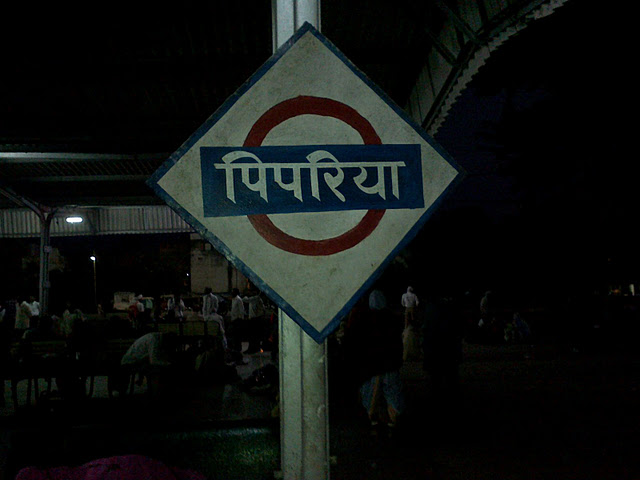
The next morning at 6.00 am we reached Pipariya … yes the train was late by 45 minutes . It started staggering at a snail pace at Jhansi till Itarsi but gained momentum steadily towards the destination.The station had only two platforms occupied by almost all locals,many squatted relaxing & staring at the people ,hurriedly we moved out of the station to find a bunch of taxiwallas encircling us ….. I said we’ll return after visiting the town in a bid to get rid of them.
There was a mad chaos towards the streets with cows and bulls roaming in their most fashionable gait.One can push you very easily with an unapologetic face,throwing a sigh at you saying “bhaiya dekh ke chalo” with a dissenting and relentless tone on all your protests. What a place? huh and a welcome note of street hawkers obstructing every way of one’s exit ,thinking pointless to move forward we resorted back towards the railway station.
These are my impromptu remarks of the town ,sorry if i offend anybody but the fact lies in perception, which is variable to the extent of experience one gets.
There was only two good thing about Piparia .. one it marks the commencement of a brief journey into the rugged mountain ranges of Satpura’s and other was “Poha Jalebi“, a breakfast cherished by almost everybody in the Central India.So was i ,liked it considering the hunger pangs and the voluptuous taste .
One can avail local transport i.e.., jeeps on sharing basis who charge around Rs.50/- per passenger. But i suggest that this option is not a viable one , due to safety issues arising out of overloading and rash driving. There is also taxi service available one can find outside the railway station. We hired a taxi for Rs.500 after a bargain …. yes the tariff is not fixed — one can bargain and get the best deal. The motive behind taking a taxi,for me was to capture the scenic beauty on the pathways towards the destination,which otherwise was not possible in a public conveyance stuffed with local junta .
But what a luck …. the taxi was in such a deplorable state of affairs that even a small jolt could pull the dashboard towards the seat!!!!!! ….. Don’t take it in literal sense it’s just a metaphor !!! …….. The Indica car had touch screen windows …… No !!!! please don’t take it as some value added feature of the car. The windows needed a slight push of the palm in order to put it down and even at the time of pulling it upwards.Very funnily it was written “Chun Mun” at the rear end of the car. I was exasperated initially thinking that this ride is not worth the pay but i calmed myself thinking of Pachmarhi.
Gyarsi ..our driver sitting inside
We started our journey overlooking the plains which ended near a small village known as “Matkuli“, which marks the commencement of the Satpura National Park and a divergent road towardsChinddwara, towards Nagpur in Maharashtra. Nagpur is roughly 250 km away from Pachmarhi with heavy frequency of buses and public transport .
We started our journey overlooking the plains which ended near a small village known as “Matkuli“, which marks the commencement of the Satpura National Park and a divergent road towardsChinddwara, towards Nagpur in Maharashtra. Nagpur is roughly 250 km away from Pachmarhi with heavy frequency of buses and public transport .
One can get a distant glimpse of the Satpura Ranges enveloped in smog,as it appears from a distance. It is only after a few miles from there the ranges are apparently seen covered with lush green blanket. I was exhilarated by the thought of reaching on top and smelling the fresh air of the hills. Our taxi driver … his name ummm…if i can recollect was Gyarsi Das , on a mute button until we reached a point on the midway , a village known as Bari Aam near Matkuli …. The main feature of this place was a small natural pond which was surrounded by small hillocks on one side and the road on the other.
The water appeared to be clear and i clicked this sun-bathed pictures of the pond , nothing was known from him about the history and eminence of the pond but this can be comprehended that its formation is only through rainwater and not as a result of the ponds formed by the Denwa river,description of which has been elaborated down in my narrative.
From here onwards Gyarsi ,our driver started to speak about the Satpura National Park and wildlife sanctuary giving rough estimates of the flora and fauna subsiding within the periphery of the reserve.
SATPURA Mountain ranges which separate the North India with the Southern part, extend from Eastern Gujarat(Rajpipla) running east through Madhya Pradesh till Chattisgarh (Rajmahal Hills)covering roughly around 900 km drained by Narmada in north andTapti river in the southern belt.
It is evident that Satpura ranges are situated between the Tapti and Narmada River basins withVindhya Rangesrunning parallel without any dissection.
The seven mountain ranges or folds of Satpura’s are Maikalwhere Narmada finds it origin near Amarkantak ., then comes Mahadeo Hills near Pachmarhi., Kalibhit ,Asirgarh, Bijagarh, Barwani, Arwani which extends to Rajpipla Hills in Eastern Gujarat.
Going by mythology it is propounded that the Satpura’s are the seven sons of Vindhya Ranges ,their birth is not a matter of consequence ,but was to avert an overflowing angry Narmada river which in its wrath was drowning the whole earth.
This is not a populist version but only takes its refuge in myths and ancient folklore devoid of historical , geological and scientific promulgation.
Moving forward towards a stream flowing in a valley is a point known as “Denwa Darshan“. One can overlook the Denwa river flowing down in the valley . Denwa is a tributary to the river Tawa. Tawa is the biggest tributary to the river Narmada.The Tawa river finds its origin near the rocky plateaus in Betul district(South Madhya Pradesh),moves northwards from there and falls into Narmada before Hoshangabad. Denwa river acts as watershed for almost all gorges and valleys of Pachmarhi surrounded by Mahadeo Hills,which is one among the seven folds of the Satpura Ranges. It is somewhere near Matkuli , we stopped to view the valley engulfed with thick vegetation on both sides and a small stream flowing ,cutting through the rocks and pebbles of this beautiful chasm.
Finally we reach the hill resort of Pachmarhi after along hour drive . We got down at the Central market of the town,strolled down the streets for a while, astounded with little information , no maps but with some internet gyan about the hill resort .Pachmarhi is a walker’s paradise and a favorite destination for trekkers. Wrapped in lush green meadows and rinsed by the many streams and waterfalls,guarded by ancient temple shrines , Pachmarhi is a place to enjoy your holidays away from the concrete jungle. I scouted for some “Poha Jalebi” which we had in Pipariya but to my distress none had it in the market. With no idea about the terrain just some information ripped from the internet,we thought to interact with some locals to get an idea ….. “idea jo duniya bada de” ,,,, he he he.
Much was known about the history of Pachmarhi owing to the interactions we had with the gentleman at the grocery shop. Pachmarhi was discovered by Caption James Forsyth in the year 1862 as a military sanitarium where medical facilities were set up. Later this town at an altitude of 3550 feet above the sea level became the summer capital of the Central Province during the British Raj period. There is a famous hill peak point known as Forsyth point giving an exemplary view of the mountain valley.This point was later renamed as “Priyadarshini point” after the name of our late Prime Minister Indira Gandhi.
While wandering for some time it was this kind-hearted gentlemen owning a grocery shop noticed us carrying the backpacks with a bewildered look on our face .. He called us upon and suggested to us something which became the mantra for us to traverse and explore the spectacle of this hill resort. The gentleman …, i am sorry i forgot his name ,though i wanted to account him in this narrative ,suggested we trek by foot through the town seeing the sign boards and the directions set out by the MP Tourism Dept.
Given below is the description of the trek which we had on the first day ,included a Rock Cave , picturesque waterfalls and streams coupled with prehistoric rock art
1st Trek (6th October 2011) —-> Pandav Caves—-> Rajat Prapat—-> Apsara Falls—-> Panchali Kund—-> Rock Paintings.
We started walking carrying our backpacks to our first destination .. towards Pandav Caves .
While walking through the city , which is mainly an Army Cantonment area housing many servicemen, we happened to see a church names “Protestant Church” it was bolted and locked with some buffaloes grazing in the area enclosed within the walls of the church. Probably the church only opened on Sundays for public prayers,sermons and religious meetings.
This magnificent structure reminds one of the British annexation of this region and making it a summer hill resort.By looking at the church its medieval architecture and grandeur can easily be apprehended.
A few minutes walk ahead lead us towards the Pachmarhi lake towards the south surrounded by the Golf Course with local habitation around its pockets.
Few kilometers ahead following the directions we reached Pandav Caves around 8.30 am in the morning. There are five caves carved out of hillock and a vast garden housed in a single complex. Pachmarhi derived its name after these five caves historically known to be built by the Buddhist missionaries.Factually these caves date back the Gupta period of ancient India. But in populist view it is widely accepted that thePandavas took refuge here in the 13th year of their exile incognito.
On the top of the cave one can find brick structures which might be a Buddhist Stupa.
There were also some paintings in these caves but were hardly visibly washed away by the passage of centuries.
Our next destination was Rajat Prapat or Silver Fall which was slated to be the next point in our escapade.
We started walking towards Rajat prapat from the Pandav Caves site.We came near the forest entry from where everybody has to stroll down the jungle with prohibition on vehicle entry thereon.
We were sitting at the forest entry to sip a cup of tea and this tribal man named Shanoo came towards us saying “guide chahiye kya saab, neeche raasta kharab hai“
He decided to wait until we consume our snacks .I was initially apprehensive because he was not even carrying his pass or Identity card . We ordered some maggie and pakoras at this local dhaba ,waiting, we were hearing from the owner of the dhaba ,a young boy barely in his mid twenties ,saying “aage paani nahin milega,paani le lo” i.e.., purchase water from here as you will not get it during the trek towards the waterfalls which emerges after a long jungle walk. Hearing this we got our supplies correct by placing an additional bottle in my pouch. Many tourists shunned him saying “hum jharne ka paani pe lenge” thus sharing such jocular pleasantries. Till then we both reconciled to take Shanoo along to avert any more complications during the passage in the jungle.
Pachmarhi is covered with Sal trees with a thick vegetation down the gorges and along the meadows. Shanoo talked a lot about the Sal trees and its utility . Sal is very useful in the treatment of many chronic diseases. He was talking about the vegetation and culture of Pachmarhi dating back to the times whenGond Aadivasi ruled this place till the advent of the British.

It was a thick jungle , realising it was a wise decision to take a guide along.Moving forward in less than a kilometer from this signboard was the mighty Rajat Prapat view.This is truly a nature’s marvel dripping down from a height of 350 feet from the cliff. The fall is not a stream but ahorsetail waterfall with a single drop flowing from the above. Excitedly, i was rushing towards the fences to catch its ambient sound scape created by water which kept gushing downwards. The waterfall is known as Rajat Prapat or Silver Falls because the sunshine on the stream makes it look like a silver strip from a distance.The same can be viewed from the picture posted below. Rajat is the hindi name for silver.
Next we moved towards Apsara Vihar or Apsara falls which is a kilometer away from Silver Falls. It is said that during the British dominion the white females used to take bath in the pool area of the fall .The white complexion of these females made the tribals believe them to be angels coming from heaven to take bath. One trivia – - – - – Kareena Kapoor and Sharukh Khan once shot their song “San San Sana na” from the movie “Ashoka” in Apsara Falls as per the account given by Shanoo.
Adjacent to the Apsara Falls is the “Panchali Kund” a cascading waterfall with 5 big rocks over which the water is descending downwards.
The serene ambiance of the landscape is such that one can attain instant solitude . I was leaning over every cavity of the fall and the water body to get a glimpse of any scenic image. The tourists started to move towards the forest entry while we thought of an adventurous escapade through the thick woods of the dense forests to catch “Rock Paintings” which date back many centuries … probably pre historic times. Disagreeably we gave our consent to Shanoo who was supposedly very excited to show us the ancient relic which is well placed in the womb of the forest.
We started to move with herds of tourists getting sparse until it disappeared completely.
We came across a dead snake-skin apparently of a big venomous serpent … and to my surprise i was able to locate a Bison’s skull lying away from the “pagdandi“(walking path) . The forest has a wide range of wild life including a both herbivores and carnivores like deer,black buck,Bengal Tiger,Leopard ,Wild Dogs (known as Son Kutte in vernacular language) ,Wild Boar,Bison etc…..
We were expecting wild intervention any time in the course of our movement into the deep gorge. It was a topsy-turvy ride with points where we were clinging to branches of the trees growing over the cliffs . With two halts in the midway and a profuse precipitation we were approaching the rock paintings .  The rock paintings of this region belong to pre historic periods. The ancient paintings clearly depict a society of hunters and gatherers. Mainly they portray man and his relationship with animals. The region was occupied by the Korku and Gond tribes who perform various customary rituals in front of these rock-cut monuments to please their ancestors by giving animal sacrifices and offerings. Also to avert any unforeseen misery or danger these customs were performed. These rock paintings clearly depict the rudiments of an art which would eventually flourish into a discipline in the near future,less was known by our pre historic caveman while creating this raw form of story telling.
The rock paintings of this region belong to pre historic periods. The ancient paintings clearly depict a society of hunters and gatherers. Mainly they portray man and his relationship with animals. The region was occupied by the Korku and Gond tribes who perform various customary rituals in front of these rock-cut monuments to please their ancestors by giving animal sacrifices and offerings. Also to avert any unforeseen misery or danger these customs were performed. These rock paintings clearly depict the rudiments of an art which would eventually flourish into a discipline in the near future,less was known by our pre historic caveman while creating this raw form of story telling.
 The rock paintings of this region belong to pre historic periods. The ancient paintings clearly depict a society of hunters and gatherers. Mainly they portray man and his relationship with animals. The region was occupied by the Korku and Gond tribes who perform various customary rituals in front of these rock-cut monuments to please their ancestors by giving animal sacrifices and offerings. Also to avert any unforeseen misery or danger these customs were performed. These rock paintings clearly depict the rudiments of an art which would eventually flourish into a discipline in the near future,less was known by our pre historic caveman while creating this raw form of story telling.
The rock paintings of this region belong to pre historic periods. The ancient paintings clearly depict a society of hunters and gatherers. Mainly they portray man and his relationship with animals. The region was occupied by the Korku and Gond tribes who perform various customary rituals in front of these rock-cut monuments to please their ancestors by giving animal sacrifices and offerings. Also to avert any unforeseen misery or danger these customs were performed. These rock paintings clearly depict the rudiments of an art which would eventually flourish into a discipline in the near future,less was known by our pre historic caveman while creating this raw form of story telling.
Shanoo took a stick in his hand and was pointing towards the pictures trying to tell the significance of this art. He was looking like a chieftain of a tribe standing on the altar to give some offerings to their gods.
We rested there for a while to move again towards the woods .Shanoo had an alternative path walking through the dense jungle to reach the Forest Entry gate . Shanoo arranged for our conveyance and we reached the town within 20 minutes.
Tired with fatigued we booked a room in the hotel “Satpura Safari”.
We rested there in our room for a while then ventured out in the town at the time of evening.
It was Vijay Dashmithat day and the whole city was buzzing with the festive season.
We set out in the streets where we could see processions moving with Goddess Durga’s idols singing and dancing over the streets.People getting involved in the customary ritual of burning the effigy ofRavana as an emblem of victory of Truth over Evil .
It was a treat to see the energy of the locals and their amicable behavior towards the tourists. With such a big procession moving through the city no signs of derangement was visible. It was quite conspicuous that people had devotion and festivity in their minds unlike what we see in big cities.
Little pretty girls dressed up like Goddess Durga , in their charismatic aura , posing for pictures ,calling each other by names of the goddesses ,with sheer innocence . This girl in the red dress proclaimed that she is goddess Sita. She truly is, i believe.
We ventured out in the market to find a 30 kilogram onion used for medicinal purpose of healing certain ailments— couldn’t believe my eyes but we happened to see it at an Ayurvedic shop.
It was 10.30 pm till then so, we moved to our hotel room ,fatigued with day one of the excursion.
Day 2 of the Trek – - -> Jata Shankar —>Begum Palace—-> Handi Khoh —> Priyadarshini Point —> Gupt Mahadev —-> Bada Mahadev —-> Pachmarhi
The next day we woke up early in the morning,finished the daily routine chores and then checked out of the hotel. The points in this trek mostly included temple caves and shrines. I was greatly exhilarated because i will be surrounded by mysticism and divinity of Mahadev Shiva for the whole day. Mahadev is a great source of inspiration ,he is a yogi and a warrior bestowed with great powers.
Jatashankar is a cave temple.One has go deep into the ravine about 200-400 meters with the help of narrow stairways laid down supported by enormous rocks on both sides.These are sedimentary rocks mainly sandstone thus having loose gravel.In simpler words if one throws a sandstone it breaks.
It is said that Lord Shiva ,after seeing the intense penance of Demon Bhasmasura ,granted him a boon of burning down anybody whose head he touches.
Going downwards a cave appears where Lord Shiva has foregone his long (hair),called “jata” in hindi to get a disguise so that Demon Bhasmasura who, in his false vanity thought of putting down Lord Shiva to ashes by touching his head, would not find him hiding here.
The entrance of the cave and overhead appears like a snake etched above ,many say it is depiction of “Sheshnaga”, a large snake which is also considered as a deity by the Hindus.
There is a natural Shiv Linga inside the cave .
The Linga is natural stalagmite stone which normally appears in limestone caves …In simpler words it happens at places submerged in water at some point of time and emerges out as soon as the water starts to recede. The whole cave gets submerged during heaving monsoon periods in the month of July and August every year.
Next we moved towards Begum Palace which is on the road connecting Piparia before entering Pachmarhi. Not much was known of this palace but i assume that Hoshangabad was once under the rule of Sultans of Malwa and Begum Palace must date back to their ages. It was an old palace almost rusted in time,broken and wailing in its ruins.
Next our taxi walla took us to Handi Khoh ,a 300 feet gorge ,which looks most impressive when one hears the sound of
water flowing downwards ,although i was unable to see any stream of water below. The point gives some breathtaking scenery standing as a testimony to the ethereal beauty of Pachmarhi. We stayed here for almost 20 minutes bending down the fence,trying to measure its depth with insatiable curiosity.
Next was Priyadarshini Point some kilometers away from Handi Khoh.
James Forsyth had his first glance of Pachmarhi from this point thus making the point named Forsyth Point until it was renamed as Priyadarshini point after the name of Late Mrs. Indira Gandhi after her visit in the year 1964.
It was already 2.00 pm and we had to rush towards our next point safely placed within the Mahadeo Hills – - the other two Mahadev shrines (Gupt Mahadev and Bada Mahadev) . I was thinking about the relevance of Lord Shiva in almost so many places of the country majorly in the mountainous terrain ,where one can encounter various ancient shrines and caves dedicated to Shiva …Mahadev.
The road leading towards the Mahadev shrine and caves had more spiral curves and altitude towering its scales .
It is almost 10-12 km from main Pachmarhi Town ,gets barely inaccessible without a vehicle.
We reach Gupt Mahadev temple another hiding place for Lord Shiva from the demon Bhasmasura .
It is a narrow cave ,sitting inside is a priest who performs the religious puja for the devotees. I saw one devotee coming out of the cave panting and gasping for air. We didn’t venture inside the cave as there were many people lined up in a queue.
Let me elaborate about the natural beauty of the area surrounding these caves which was so enigmatic to the extent that i can write a whole book on it…….. ha ha again a metaphor –..
A little stream of water, a rivulet was flowing ,seemingly estranged trying to find a way to meet with its alma mater —- Denwa River
Tribal’s were sighted selling ber … or bore as we call in hindi ,salted cucumber and other eatables at … oh my
god!!!!!!! in dirt cheap rates … This is a picture of a very hospitable tribal woman . I clicked her picture and started to move . She beckoned me from back saying “photo le liya to kuch kharid ke bhi jao” I tried to move forward unashamedly but later thought unwise to pass off like this — moved towards here and bought handful of ber salted with masala for only Rs.5/- . It was such a generous pack that we were unable to eat the whole packet owing to its abundance.
The Bada Mahadev shrine is at a walking distance from the Gupt Mahadev. We along with all other revelers started to walk towards the Bada Mahadev Shrine which is housed inside a big cave. The cave is so dark and water drips inside the cave making it very dark and moist. It is believed that Lord Vishnu killed Demon Bhasmashura by tricking him looking like a beautiful women by attaining his Mohini Avatar here .
After visiting the shrine we sat relaxing ,discussing about the grandeur and majesty of this massive rock-cut caves ,at localdhaba sipping a cup of coffee.Look at this guy getting samosa for us.I exchanged words with the locals trying to get their version of the story about the cave. It was almost 4.30 pm and we decided to move towards the parking to get into our taxi .
I was thinking about Dhoopgarh which was missing from my schedule owing to the fact that we had to catch the train back to Delhi the same evening. I kept Dhoopgarh as a reason for my subsequent visit to Pachmarhi which will surely happen one day. Dhoopgarh is the highest point in the Satpura Hills scaling an altitude of 4000 feetabove the sea level. It gives a panoramic view of all of the Mahadeo Hills. It is a very good sunset and sunrise point .
- Not my click …….. i regard the original uploader ….
Though i have not visited the point but for the readers i would like to share a picture of Dhoopgarh.
Dhoopgarh ,gigantic in stature stands tall acting as a vantage point for viewing all the peaks,cliffs and hills surrounding Pachmarhi till some parts of Chinddwara.
Returning back to Pachmarhi we were unable to stop at multiple spots to click pictures ,reason being irresistible sightings ……… with abundance of natural spectacles.
Another point was known as Green Valley where one can view a lush green valley with a large expanse of thick vegetation of Sal and Bamboo forest.
While returning traversing from the same path ….. I was thinking of inventing a time machine. Pachmarhi is in itself a great subterfuge skillfully nested within the Satpura Ranges.
It was evening and the sun was seen swallowed by the horizon, inviting dusk aboard to spell darkness putting the whole valley to sleep.
Returning back to the concrete jungle was seemingly tough for me …. I was going through a “chemical locha” fondly remembering Billy Ocean’s song “When the going get’s tough,The tough get’s the going“.
Hope this narrative acts as a utility to all the revelers ,backpackers, wanderers and nature lovers. This narrative is dedicated to all the knight errant like us.
Looking forward for your feedback ….. till then happy reading .






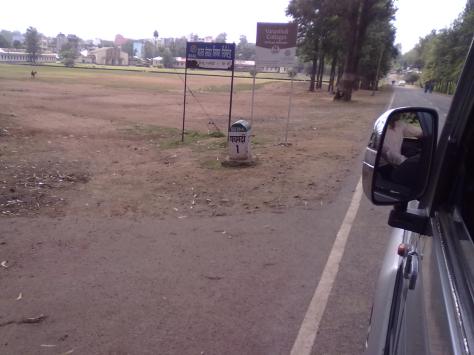
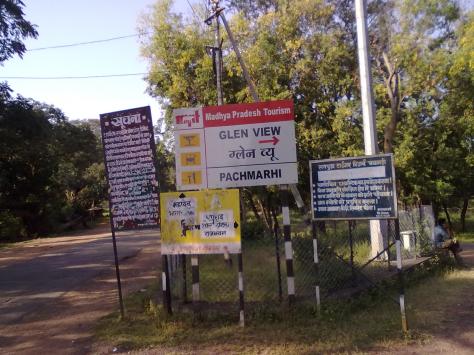

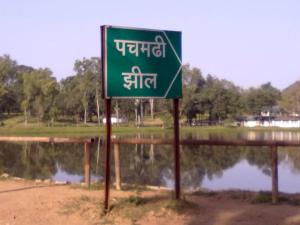





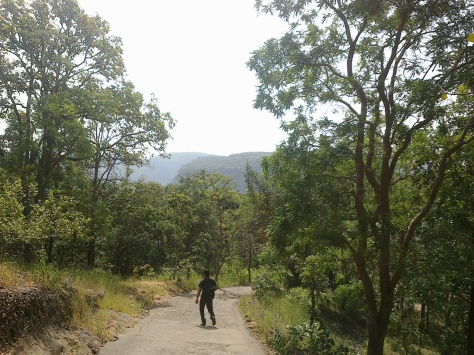
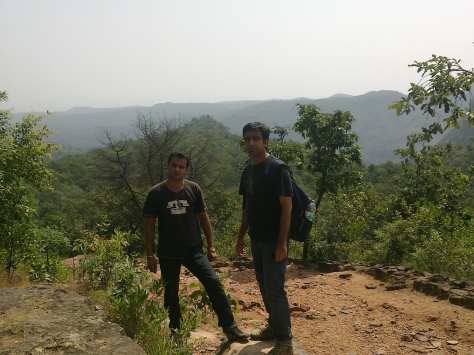


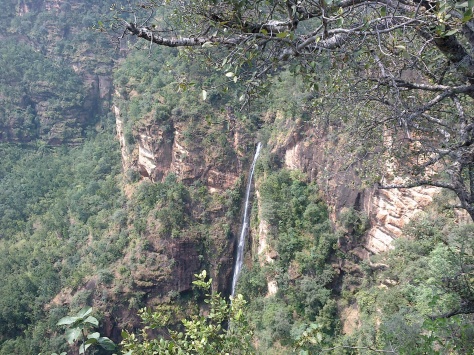





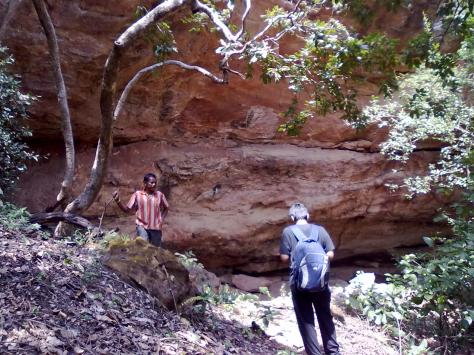




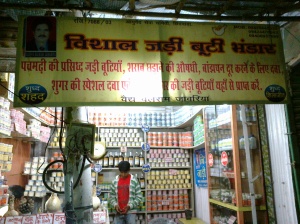

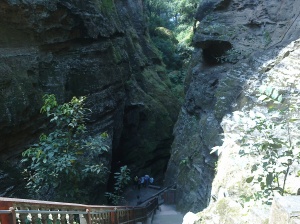



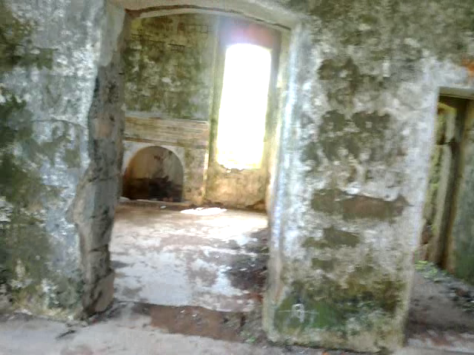




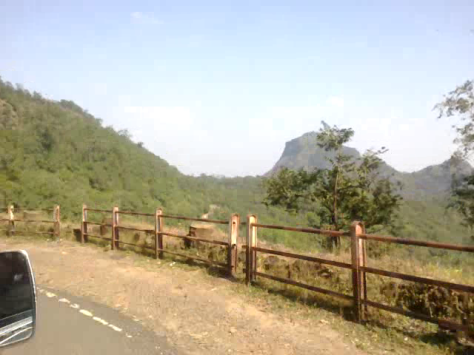
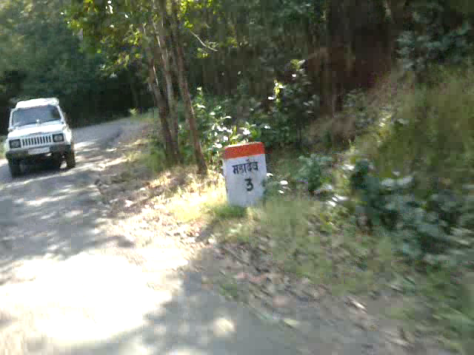


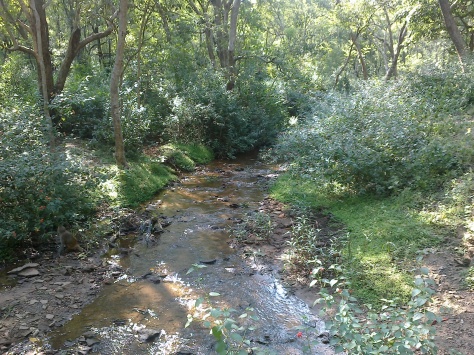



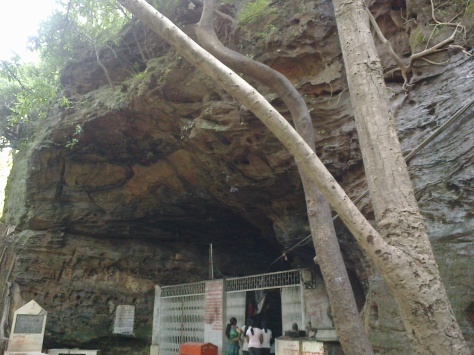
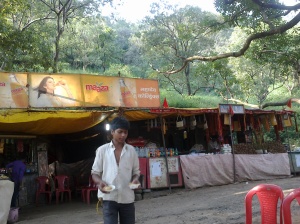
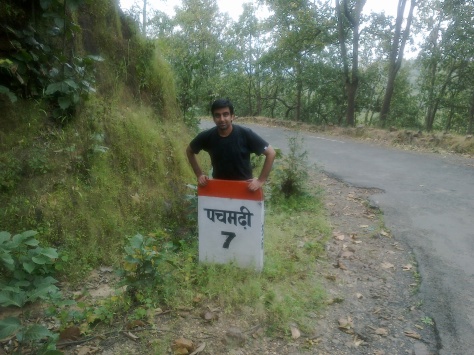


No comments:
Post a Comment